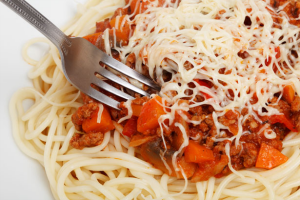 Most of you are probably familiar with many of the pathogens that frequently cause food poisoning, like E coli, Salmonella, and the Norovirus. But there are numerous ways your food can make you sick, some of which aren’t very well known despite infecting hundreds of people every year. And even when there is a major outbreak, they usually don’t get a whole lot of media coverage.
Most of you are probably familiar with many of the pathogens that frequently cause food poisoning, like E coli, Salmonella, and the Norovirus. But there are numerous ways your food can make you sick, some of which aren’t very well known despite infecting hundreds of people every year. And even when there is a major outbreak, they usually don’t get a whole lot of media coverage.
One of those pathogens is known as Bacillus cereus, which according to the Better Business Bureau can be found in meats, milk, and fish. However, it is more notorious for its ability to proliferate on rice, and has a rather insidious way of making you sick.
Contamination from Bacillus cereus occurs when foods like pasta or rice are left unrefrigerated for several hours. This bacteria can lie dormant for years, and is activated by the high temperatures needed to cook the food. Once the temperature drops to between 60 and 100 degrees Fahrenheit, the bacteria then begins to multiply at a rapid pace. At room temperature it takes a single Bacillus cereus spore between 8 and 10 hours turn into 1 million organisms. And since this spore can survive the cooking process, reheating the food does nothing to make it safe again.
Once the bacteria has been activated by the heat of your stove, it begins to excrete toxins into the food. If ingested, this can cause bouts of diarrhea and vomiting that typically last 24 hours, and for those with weak immune systems like children and seniors, this can often lead to death.
As you can imagine, it’s quite easy for someone to make the mistake of eating contaminated rice. Since it isn’t normally associated with food poisoning, most people would think nothing of leaving rice unrefrigerated for the afternoon, and preserving it at their leisure. They may decide to reheat it for lunch later in the week, and after seeing that there is no mold, they would assume it is safe for consumption.
Many people have made this fatal mistake, including 5 children who became seriously ill after eating a pasta salad in 2003. The pasta had been prepared for a picnic (where it was probably left out for the whole afternoon), and was set aside in the fridge that evening. The kids then decided to eat it 3 days later, but after taking a few bites, three of them noticed a strange smell and put the dish back in the fridge. That was all it took. All five children quickly fell ill, and one died a mere 13 hours after eating the pasta.
But death can occur even faster, depending on how much is eaten, and how long the dish has been left out. The little girl who died didn’t stop eating the pasta after the first bite like her siblings did, which not only explains her death, but also why she was the first one to experience symptoms.
Another example involves a 20 year old man from Brussels who died in 2008 after eating spaghetti that had been left at room temperature for 5 days. He experienced symptoms of nausea after only 30 minutes, and was dead 10 hours after eating the meal.
While most of us would probably expect to get sick from eating anything that has been left out for the better part of a week, you probably wouldn’t think it’s lethal unless it was some kind of chicken or fish, in which case the smell would probably be so revolting that no sane person would eat it. Even though Bacillus cereas will create an odor, apparently it wasn’t bad enough to dissuade that Belgian man from eating the spaghetti. Without knowing the dangers associated with these kinds of foods, any one of us could fall victim to contaminated leftovers.
So the next time you have the opportunity to eat leftover rice, or even if some pasta catches your eye at a buffet, inspect it carefully before eating it. Pay special attention to the smell, since that is the only tell tale sign of contamination. Doing anything less may prove lethal.
